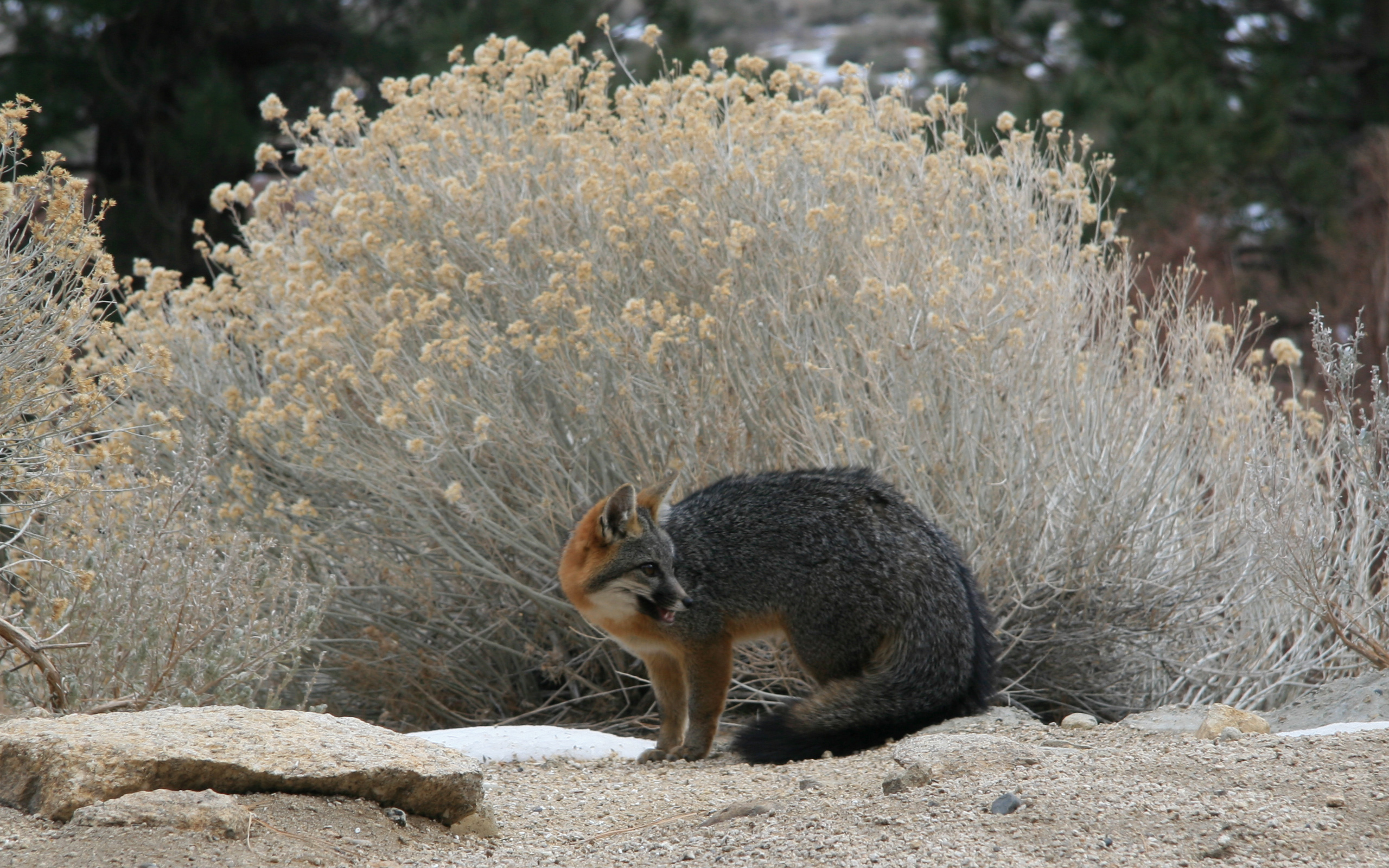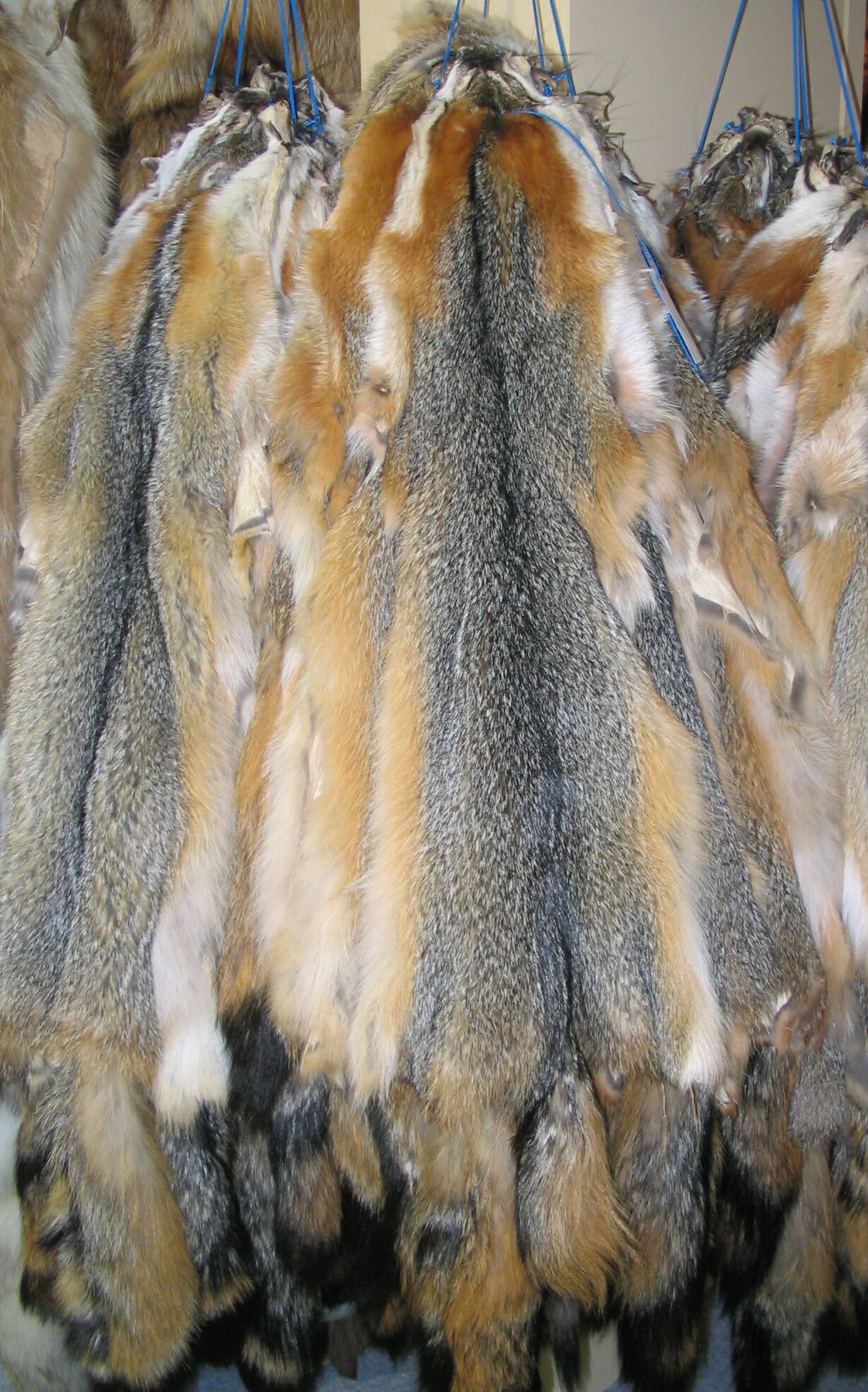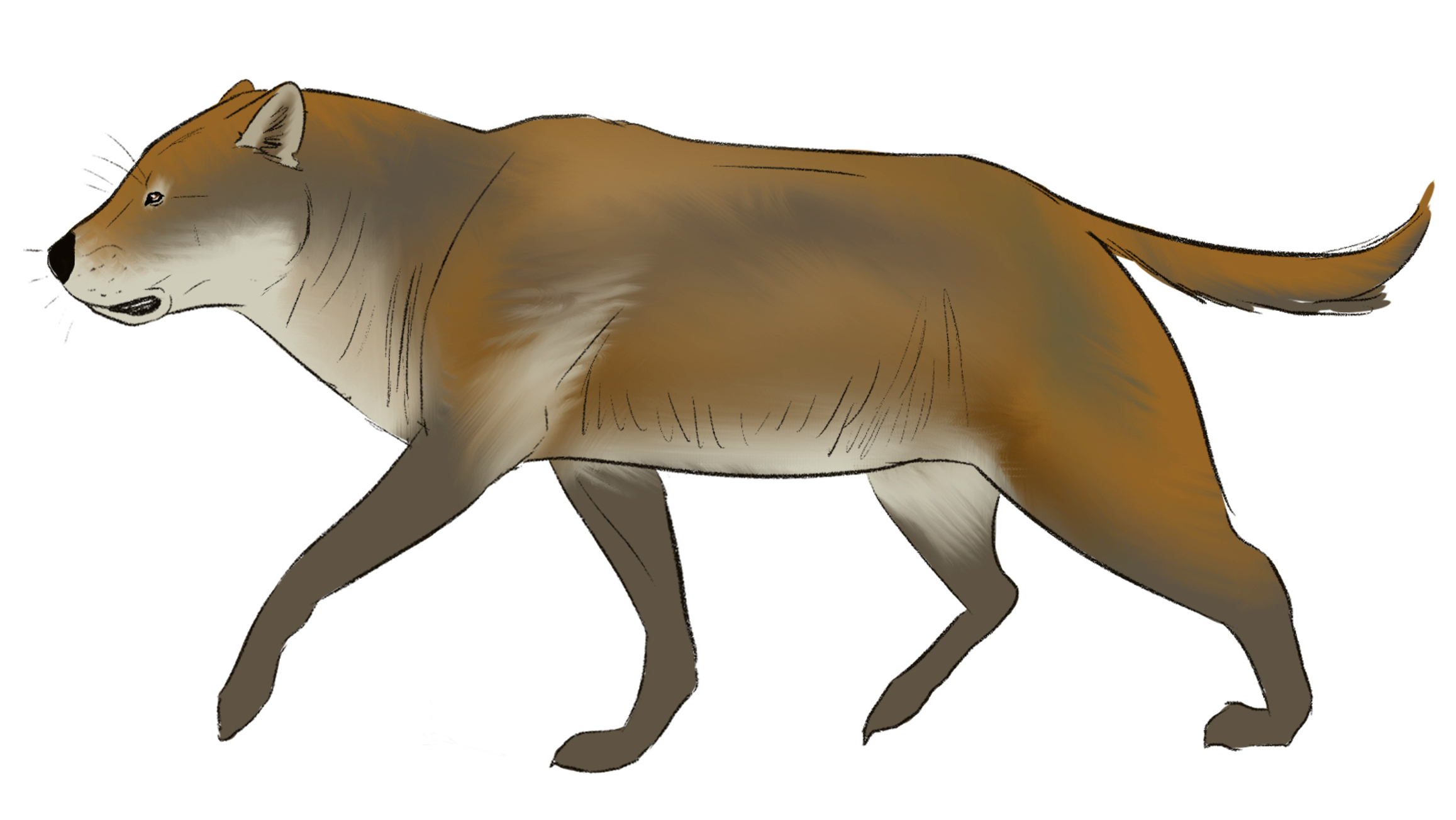|
Grey Fox
The gray fox (''Urocyon cinereoargenteus''), or grey fox, is an omnivorous mammal of the family Canidae, widespread throughout North America and Central America. This species and its only congener, the diminutive island fox (''Urocyon littoralis'') of the California Channel Islands, are the only living members of the genus '' Urocyon'', which is considered to be genetically sister to all other living canids. Its species name ''cinereoargenteus'' means " ashen silver". It was once the most common fox in the eastern United States, and though still found there, human advancement and deforestation allowed the red fox to become the predominant fox-like canid. Despite this post-colonial competition, the gray fox has been able to thrive in urban and suburban environments, one of the best examples being southern Florida. The Pacific States and Great Lakes region still have the gray fox as their prevalent fox. Etymology The genus '' Urocyon'' comes from Ancient Greek οὐρά (ourá, ... [...More Info...] [...Related Items...] OR: [Wikipedia] [Google] [Baidu] |
Nevada
Nevada ( ; ) is a landlocked state in the Western United States. It borders Oregon to the northwest, Idaho to the northeast, California to the west, Arizona to the southeast, and Utah to the east. Nevada is the seventh-most extensive, the 32nd-most populous, and the ninth-least densely populated U.S. state. Nearly three-quarters of Nevada's population live in Clark County, which contains the Las Vegas–Paradise metropolitan area, including three of the state's four largest incorporated cities. Nevada's capital is Carson City. Las Vegas is the largest city in the state. Nevada is officially known as the "Silver State" because of the importance of silver to its history and economy. It is also known as the "Battle Born State" because it achieved statehood during the Civil War (the words "Battle Born" also appear on its state flag); due to the presidency of Abraham Lincoln, the Union benefited immensely from the support of newly awarded statehood by the infusion of t ... [...More Info...] [...Related Items...] OR: [Wikipedia] [Google] [Baidu] |
Red Fox
The red fox (''Vulpes vulpes'') is the largest of the true foxes and one of the most widely distributed members of the order Carnivora, being present across the entire Northern Hemisphere including most of North America, Europe and Asia, plus parts of North Africa. It is listed as least concern on the IUCN Red List. Its range has increased alongside human expansion, having been Foxes in Australia, introduced to Australia, where it is considered harmful to native small and medium-sized rodents and marsupials. Due to its impact on native species, it is included on the list of the "List of the world's 100 worst invasive species, world's 100 worst invasive species". The red fox originated in Eurasia during the Middle Pleistocene at least 400,000 years ago and later colonised North America sometime prior to 130,000 years ago. Among the true foxes, the red fox represents a more progressive form in the direction of Carnivore, carnivory. Apart from its large size, the red fox is distin ... [...More Info...] [...Related Items...] OR: [Wikipedia] [Google] [Baidu] |
Dentition
Dentition pertains to the development of teeth and their arrangement in the mouth. In particular, it is the characteristic arrangement, kind, and number of teeth in a given species at a given age. That is, the number, type, and morpho-physiology (that is, the relationship between the shape and form of the tooth in question and its inferred function) of the teeth of an animal. Terminology Animals whose teeth are all of the same type, such as most non-mammalian vertebrates, are said to have '' homodont'' dentition, whereas those whose teeth differ morphologically are said to have '' heterodont'' dentition. The dentition of animals with two successions of teeth (deciduous, permanent) is referred to as '' diphyodont'', while the dentition of animals with only one set of teeth throughout life is ''monophyodont''. The dentition of animals in which the teeth are continuously discarded and replaced throughout life is termed '' polyphyodont''. The dentition of animals in which the teeth ... [...More Info...] [...Related Items...] OR: [Wikipedia] [Google] [Baidu] |
Gray Fox Fur
Gray fox fur is a type of fur obtained from the gray fox, a species distinguished from most other canids by its grizzled gray upper parts. It also has reddish coloration on parts of its body, including the legs, sides, feet, chest, and back, as well as on the sides of the head and neck. The white color is seen on the ears, throat, chest, belly, and hind legs. Moreover, the gray fox has a stripe of black hair that runs along the middle of its tail and ends in a black tip as well. The species occurs from southern Canada to northern South America. Fur The gray fox fur is smaller than that of the red fox, it also has noticeably short paws, but a relatively long, thick tail. It is long, the tail is long. The guard hair is coarse and stiff and shorter compared to the red fox, and the undercoat is quite soft and very dense. Due to the black and white banding of the guard hairs, the back is pepper-and-salt-like in color, i.e. more silvery or darker gray-black, from which the animal ... [...More Info...] [...Related Items...] OR: [Wikipedia] [Google] [Baidu] |
Vulpes
'' Vulpes '' is a genus of the subfamily Caninae. The members of this genus are colloquially referred to as true foxes, meaning they form a proper clade. The word "fox" occurs in the common names of all species of the genus, but also appears in the common names of other canid species. True foxes are distinguished from members of the genus ''Canis'', such as domesticated dogs, wolves, jackals and coyotes, by their smaller size (5–11 kg), longer, bushier tail, and flatter skull. They have black, triangular markings between their eyes and nose, and the tip of their tail is often a different color from the rest of their pelt. The typical lifespan for this genus is between two and four years, but can reach up to a decade. Extant species Within ''Vulpes'', 12 separate extant species and four fossil species are described: Early history The oldest known fossil species within ''Vulpes'' is ''V. riffautae'', dating back to the late Miocene of Chad, which is within the Neogene ... [...More Info...] [...Related Items...] OR: [Wikipedia] [Google] [Baidu] |
Urocyon Cinereoargenteus GrayFox Cameo
''Urocyon'' (Greek: "tailed dog") is a genus of Canidae which includes the gray fox (''Urocyon cinereoargenteus'') and the island fox (''Urocyon littoralis''). These two fox species are found in the Western Hemisphere. Whole genome sequencing indicates that ''Urocyon'' is the most basal genus of the living canids. Fossils of what is believed to be the ancestor of the gray fox, ''Urocyon progressus'', have been found in Kansas and date to the Upper Pliocene, with some undescribed specimens dating even older. Extant species Extinct species Cozumel fox The Cozumel fox is a critically endangered small gray fox found on the island of Cozumel, Mexico. The last reported sighting was in 2001, but surveys focusing on this species have not yet been carried out. In September 2023, a live Cozumel fox was rescued from a road and subsequently released. The Cozumel fox has not been scientifically described, but is a dwarf Dwarf, dwarfs or dwarves may refer to: Common uses *Dwarf ... [...More Info...] [...Related Items...] OR: [Wikipedia] [Google] [Baidu] |
Guard Hair
Guard hair or overhair is the outer layer of hair of most mammals, which overlay the fur. Guard hairs are long and coarse and protect the rest of the pelage (fur) from abrasion and frequently from moisture. They are visible on the surface of the fur and usually lend a characteristic contour and color pattern. Underneath the contour hair is the short, dense, fine down. There are three types of guard hair: awns, bristles, and spines.G. A. Feldhamer, J. F. Merritt, C. Krajewski, J. L. Rachlow, K. M. Stewart. ''Mammalogy: Adaptation, Diversity, Ecology. Fifth Edition.'' Johns Hopkins University Press. 2020Robert E. Martin, Ronald H. Pine, Anthony F. DeBlase. ''A Manual of Mammalogy: With Keys to Families of the World''. 3rd edition. Waveland Pr Inc. 2011D. A. Kelt, J. L. Patton. ''A Manual of the Mammalia: An Homage to Lawlor’s “Handbook to the Orders and Families of Living Mammals”.'' University of Chicago Press. 2020 Description Guard hair (overhair) is the top or outer lay ... [...More Info...] [...Related Items...] OR: [Wikipedia] [Google] [Baidu] |
Sexual Dimorphism
Sexual dimorphism is the condition where sexes of the same species exhibit different Morphology (biology), morphological characteristics, including characteristics not directly involved in reproduction. The condition occurs in most dioecy, dioecious species, which consist of most animals and some plants. Differences may include secondary sex characteristics, size, weight, color, markings, or behavioral or cognitive traits. Male-male reproductive competition has evolved a diverse array of sexually dimorphic traits. Aggressive utility traits such as "battle" teeth and blunt heads reinforced as battering rams are used as weapons in aggressive interactions between rivals. Passive displays such as ornamental feathering or song-calling have also evolved mainly through sexual selection. These differences may be subtle or exaggerated and may be subjected to sexual selection and natural selection. The opposite of dimorphism is ''monomorphism'', when both biological sexes are phenotype, ... [...More Info...] [...Related Items...] OR: [Wikipedia] [Google] [Baidu] |
Canid
Canidae (; from Latin, ''canis'', "dog") is a family (biology), biological family of caniform carnivorans, constituting a clade. A member of this family is also called a canid (). The family includes three subfamily, subfamilies: the Caninae, and the extinct Borophaginae and Hesperocyoninae. The Caninae are known as canines, and include Dog, domestic dogs, Wolf, wolves, coyotes, raccoon dogs, Fox, foxes, jackals and other species. Canids are found on all continents except Antarctica, having arrived independently or accompanied by Human, human beings over extended periods of time. Canids vary in size from the gray wolf to the fennec fox. The body forms of canids are similar, typically having long muzzles, upright ears, teeth adapted for cracking bones and slicing flesh, long legs, and bushy tails. They are mostly social animals, living together in family units or small groups and behaving co-operatively. Typically, only the dominant pair in a group breeds and a litter of young ... [...More Info...] [...Related Items...] OR: [Wikipedia] [Google] [Baidu] |
Argentum
Silver is a chemical element; it has symbol Ag () and atomic number 47. A soft, whitish-gray, lustrous transition metal, it exhibits the highest electrical conductivity, thermal conductivity, and reflectivity of any metal. Silver is found in the Earth's crust in the pure, free elemental form (" native silver"), as an alloy with gold and other metals, and in minerals such as argentite and chlorargyrite. Most silver is produced as a byproduct of copper, gold, lead, and zinc refining. Silver has long been valued as a precious metal. Silver metal is used in many bullion coins, sometimes alongside gold: while it is more abundant than gold, it is much less abundant as a native metal. Its purity is typically measured on a per-mille basis; a 94%-pure alloy is described as "0.940 fine". As one of the seven metals of antiquity, silver has had an enduring role in most human cultures. Other than in currency and as an investment medium ( coins and bullion), silver is used i ... [...More Info...] [...Related Items...] OR: [Wikipedia] [Google] [Baidu] |
Great Lakes Region
The Great Lakes region of Northern America is a binational Canadian– American region centered on the Great Lakes that includes the U.S. states of Illinois, Indiana, Michigan, Minnesota, New York, Ohio, Pennsylvania, and Wisconsin and the Canadian province of Ontario. It encompasses both the Upper Midwest and parts of the Mid-Atlantic. Canada's Quebec province is at times included as part of the region because the St. Lawrence River watershed is part of the continuous hydrologic system. The region forms a distinctive historical, economic, and cultural identity. A portion of the region also encompasses the Great Lakes megalopolis. State and provincial governments are represented in the Conference of Great Lakes and St. Lawrence Governors and Premiers, which also serves as the Secretariat to the Great Lakes St. Lawrence Compact and the Great Lakes–Saint Lawrence River Basin Sustainable Water Resources Agreement. The Great Lakes region takes its name from the correspon ... [...More Info...] [...Related Items...] OR: [Wikipedia] [Google] [Baidu] |








